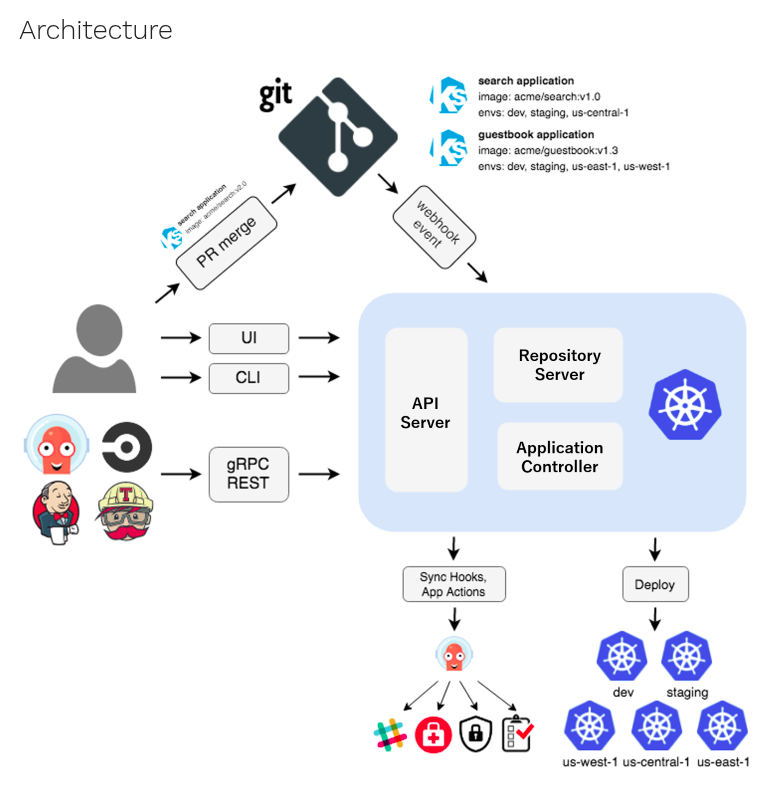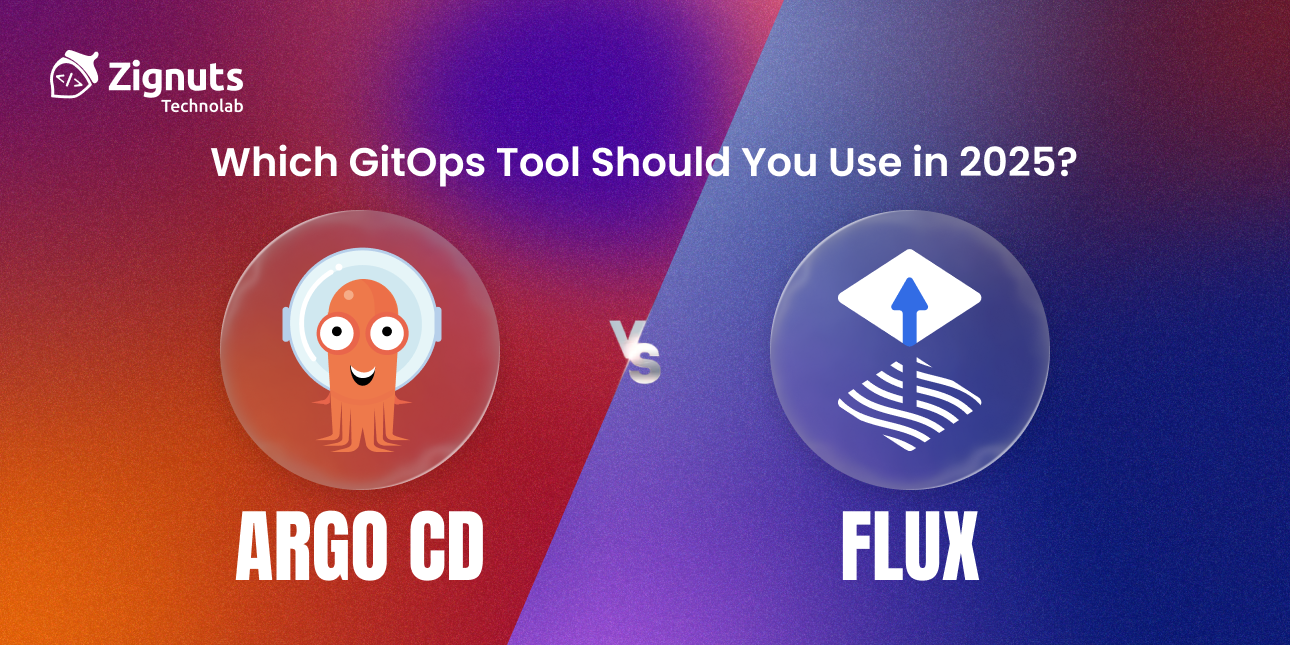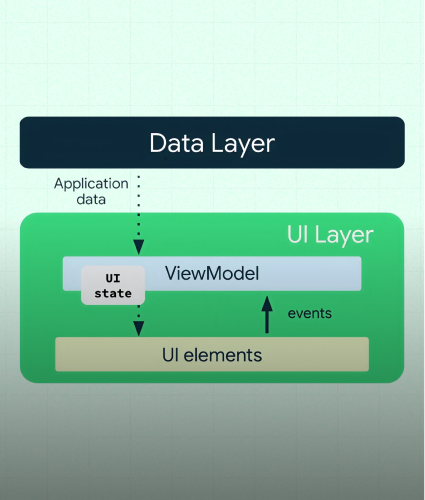If you're deploying to Kubernetes in 2025, you’re probably choosing between two leading GitOps tools: Argo CD and Flux CD. Both automate continuous deployment based on Git, but they differ in architecture, user experience, and operational control.
This guide will help you:
- Understand each tool’s architecture
- Compare them in real-world use cases
- Learn how to install them
- Choose the best GitOps engine for your platform or team
GitOps is the practice of using Git repositories to manage and operate infrastructure and applications. Instead of triggering deployments manually or via CI/CD, GitOps tools like Flux and Argo CD reconcile your Kubernetes clusters to match the desired state in Git.
Argo CD vs Flux CD in 2025
What is Argo CD?
Argo CD is a declarative GitOps tool that continuously syncs your Kubernetes clusters with what's defined in Git. Its standout feature is a rich web UI that lets you visualize and manage applications directly from the browser.
While it also supports automation and continuous reconciliation, Argo CD’s interface-first design makes it more approachable for application teams, SREs, and non-Kubernetes experts.
Features That Shine:
- Visual UI for app syncs, diffs, logs, rollbacks, and status
- Support for multi-cluster, multi-environment setups
- Centralized RBAC for access and visibility management
- Sync strategies: manual, automated, hooks, and wave deployments
Why Choose Argo CD?
- Powerful for app teams, zero kubectl required
- Built-in support for GitHub/GitLab/Bitbucket workflows
- Easily adoptable even without deep Kubernetes experience
- Ideal for teams that want a single pane of glass for GitOps
Considerations:
- RBAC system is custom (non-K8s), and can become complex at scale
- UI-dependent workflows may abstract away important behaviors
- Drift can occur with certain Helm/Kustomize edge cases

Argo CD (2025 Edition) Installation Guide
Installing Argo CD (2025 Edition)
You can install Argo CD in any Kubernetes cluster using either kubectl or Helm.
Option 1: Install with kubectl (official default)
This deploys all Argo CD components including the API server, UI, and GitOps engine.
Access Argo CD UI:
Visit https://localhost:8080 in your browser.
Get the default admin password:
Create a new GitOps app:
Option 2: Install Argo CD using Helm (advanced use)
What is Flux CD?
Flux CD is a GitOps engine built entirely around Kubernetes controllers. It embraces Kubernetes-native concepts; everything is defined as a Custom Resource Definition (CRD) and reconciled continuously from source to cluster.
Flux doesn’t just deploy code, it enforces state. If your live cluster diverges from Git (e.g., due to manual edits), Flux will detect the drift and revert it, ensuring deterministic deployments.
Architecture Highlights:
- Modular components: source-controller, kustomize -controller, helm-controller, etc.
- Native integration with Git, Helm, OCI registries, and S3 buckets
- Strong support for image automation (auto-updating manifests based on image tags)
- Ideal for platform engineering and infrastructure teams
Why Choose Flux?
- Deep Kubernetes integration, no external orchestration logic
- Highly composable (use only the controllers you need)
- Preferred by teams who already think in CRDs and reconciliation loops
- Excellent for infrastructure-as-code and complex dependency handling
Considerations:
- No native UI (can be integrated with Weaveworks UI, Grafana, etc.)
- Steeper learning curve if you’re not Kubernetes-native
- Requires more initial setup for app teams or less-experienced developers

Installing Flux CD (2025 Edition)
Flux provides a lightweight CLI to bootstrap GitOps in a cluster.
Step 1: Install Flux CLI
Step 2: Bootstrap Flux with GitHub
This sets up Flux in your cluster, pushes the initial manifests to your Git repo, and connects your GitOps flow.
Step 3: Add a HelmRelease or Kustomization
Here’s an example of a HelmRelease resource:
And for a HelmRepository:
Apply using git push and Flux will handle the rest.
Monitor Flux Health
Which One to Choose in 2025
If you're a platform engineer, building repeatable, modular infrastructure patterns, Flux CD will be your ideal companion. It provides low-level control, precise ordering, native support for Helm and Kustomize, and secret management, all without requiring a UI.
If you're focused on developer experience, or managing dozens of applications across clusters, Argo CD wins with its web UI, team-based RBAC, and fast onboarding. It’s easier to demo, easier to teach, and easier to observe deployments live.
Final Recommendation
- Use Flux CD if you’re building a Kubernetes-native, highly automated platform that prioritizes modularity and declarative infrastructure.
- Use Argo CD if you want centralized control, visibility, and an intuitive UI for managing deployments across environments.
Need expert support to scale your DevOps and development operations? Hire skilled DevOps Engineers from our team to automate your CI/CD pipelines, manage cloud infrastructure, and implement secure, scalable version control systems tailored to your needs.
👉 Ready to get started? Contact Us today to discuss your project and find the right DevOps talent for your business.




.svg)

.svg)



.svg)

.svg)


.png)





.png)
.png)
.png)



.png)
.png)
.png)



